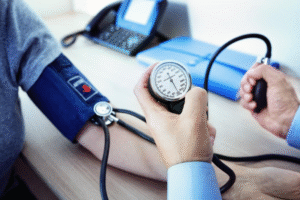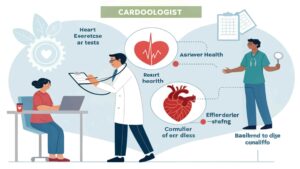Chest pain is a symptom that often signals underlying health conditions. It is not always related to the heart, but often indicates heart disease or even a heart attack. Adopting prevention techniques and recognizing management strategies is key to protecting your health. Let’s explore ways to prevent and handle pain in the chest effectively.
Prevention Methods
Preventing pain in the chest starts with addressing risk factors associated with heart health and overall wellness. Implementing the following strategies may help reduce your likelihood of experiencing chest pain.
- Adopt a Heart-Healthy Diet: A heart-healthy diet consists of foods that reduce strain on your cardiovascular system. Minimize your intake of saturated fats, cholesterol, and sodium, as these often contribute to high blood pressure and increase the risk of heart disease.
- Engage in Regular Physical Activity: Regular exercise strengthens the heart and improves circulation. It also helps reduce stress, a known factor in chest pain. Adding exercise to your routine may help maintain muscle mass and support weight management. Make sure to start slowly if you’re new to exercise and gradually increase intensity over time.
- Maintain a Healthy Weight: Excess weight can strain the heart and increase the probability of heart-related pain. Achieving and maintaining a healthy weight through a balanced diet and regular exercise can decrease these risks. Weight loss also improves cholesterol levels and reduces blood pressure.
- Quit Smoking and Limit Alcohol Consumption: Smoking damages blood vessels, raises blood pressure, and increases heart disease risks, leading to pain in the chest. Excessive alcohol consumption may also elevate blood pressure and triglyceride levels. Limiting alcohol intake to recommended levels can help you mitigate these risks.
By incorporating these prevention methods into your daily routine, you can significantly reduce the likelihood of experiencing pain in the chest and improve your overall cardiovascular health.
Management Strategies
While prevention measures are key, knowing how to manage pain in the chest when it occurs is just as helpful. Here are ways to manage pain in the chest:
- Recognize Warning Signs: Chest pain can be a key indicator of serious conditions such as a heart attack. Common heart attack warning signs include pain or discomfort in the center or left side of the chest, shortness of breath, nausea, and cold sweats. If these symptoms appear, seek immediate medical attention.
- Rest and Reduce Strain: If you experience minor, non-cardiac pain in the chest, reducing physical activity and resting can often alleviate discomfort. Avoid strenuous activities during episodes and focus on calming techniques such as deep breathing.
- Use Medications as Prescribed: Certain types of chest pain, such as those caused by acid reflux or mild angina, respond well to medications. If you have existing prescriptions for pain in the chest, use them precisely as directed by your healthcare provider.
- Consult a Healthcare Professional: Unexplained pain in the chest should always prompt a discussion with your healthcare professional. Even minor symptoms could indicate underlying conditions requiring treatment. Early medical consultation often prevents more severe complications.
Effective management of chest pain relies on prompt recognition of symptoms and adherence to recommended treatment protocols.
Schedule a Chest Pain Evaluation Today
Prevention and management are key components of maintaining a healthy heart and avoiding pain in the chest. By focusing on heart-healthy habits, monitoring potential warning signs, and seeking timely medical advice, you can reduce the risks associated with this condition. Schedule a professional evaluation today to learn more about ways to manage and prevent chest pain.














